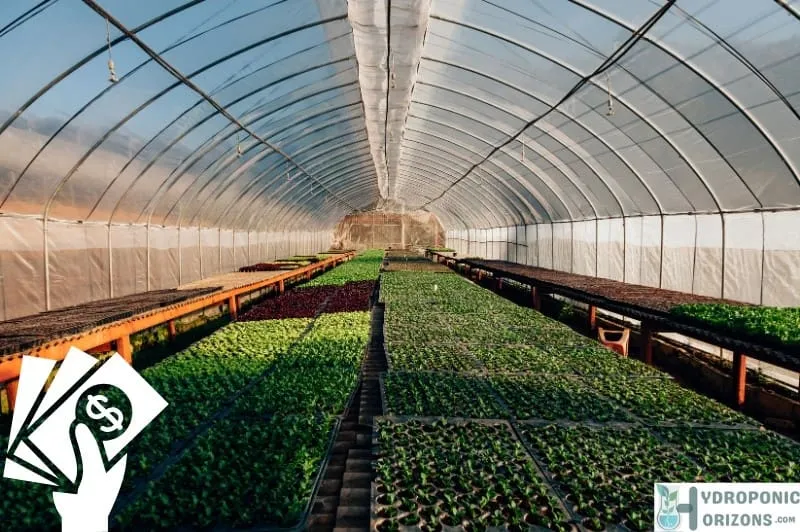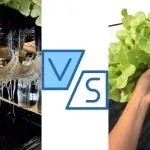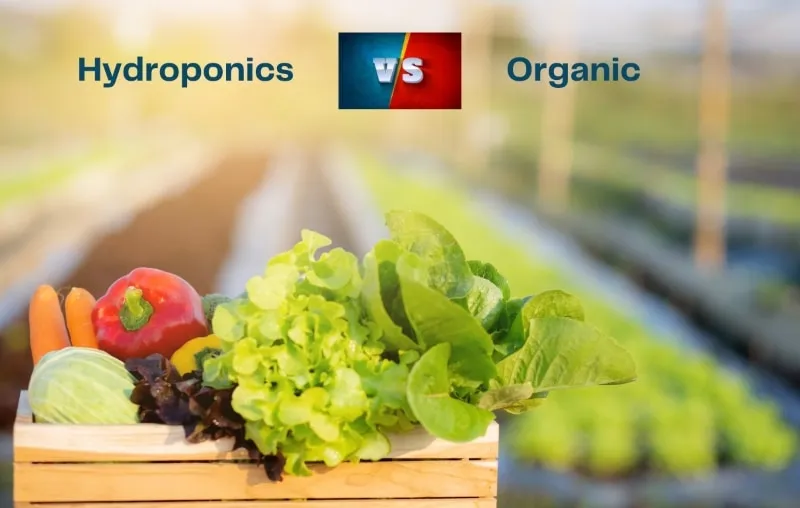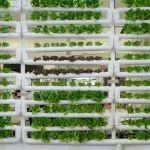When deciding between hydroponics and soil gardening, it’s essential to weigh the pros and cons of both options. Each method comes with unique benefits and challenges that suit different gardening styles and preferences. In this article, you’ll explore the advantages and drawbacks of hydroponics and soil gardening, helping you choose the most suitable system for your needs.
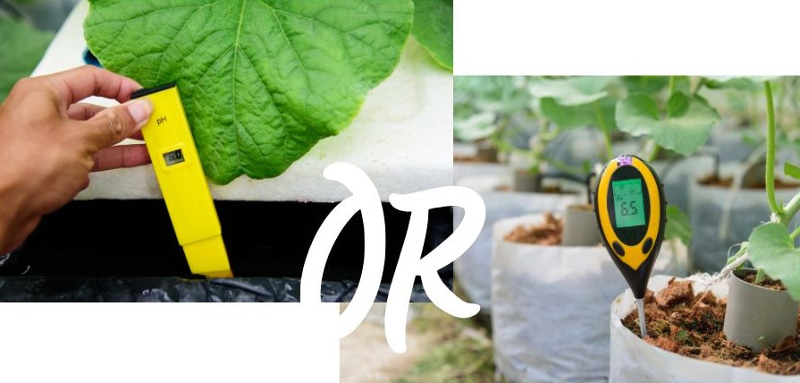
Hydroponics is a method of growing plants without soil, using nutrient-rich solutions to deliver essential elements directly to the plant’s roots. This innovative approach allows you to grow plants indoors and conserve water, but comes with the expense of the initial set up and a learning curve. On the other hand, soil gardening is a more traditional, affordable way to cultivate plants, providing a natural environment for your plants to grow. However, it may require more effort to manage pests and account for climate variability. By considering these factors, you can make an informed choice to optimize your gardening experience.
- Understanding Hydroponics and Soil Gardening
- Comparing Nutrient Delivery
- Pros and Cons of Hydroponics and Soil
- Space And Location Considerations
- Crops And Yield Differences
- Pest and Weed Management
- Cost And Maintenance Factors
- Taste and Flavor Comparison
- Growth Cycle And Environment Control
- Alternative Growing Mediums
- Conservation And Waste
- Indoor Hydroponic Systems
- FAQs
Understanding Hydroponics and Soil Gardening
Trying to decide which method of gardening to choose for your home can be a complex task. In order to help you make an informed decision, let’s dive into the two main methods of gardening: hydroponics and soil gardening.
Defining Hydroponics
Hydroponics is a method of growing plants without soil, instead using mineral nutrient solutions in an aqueous solvent. In hydroponic systems, plants can either have their roots exposed to the nutrient-rich liquid or be supported by an inert medium like perlite or coconut coir. This method offers numerous benefits like faster growth rates, larger yields, and the ability to grow plants indoors. Some drawbacks, however, include higher upfront costs and a steeper learning curve compared to traditional soil gardening.
Defining Soil Gardening
Soil gardening is a more traditional method, in which plants draw their nutrients from a rich, organic soil mixture. This method is typically easier to learn and more affordable than hydroponics. However, soil gardening comes with its own set of challenges, such as dealing with pests and relying on climate dependability.
Here’s a quick comparison of hydroponics and soil gardening:
| Hydroponics | Soil Gardening | |
|---|---|---|
| Grow Rate | Faster | Slower |
| Plant Size | Larger | Smaller |
| Pests | Less likely | More likely |
| Learning Curve | Harder | Easier |
| Upfront Costs | Higher | Lower |
As you delve further into gardening, keep in mind that both hydroponics and soil gardening have unique advantages and drawbacks depending on your personal needs and preferences. Consider factors like available time, space, and budget in order to choose the method that best suits your situation. So go ahead and explore both – eventually, you’ll find the perfect gardening method for your lifestyle.
Comparing Nutrient Delivery
When it comes to growing plants, nutrient delivery plays a crucial role in their overall health and growth. To understand the differences in nutrient delivery between hydroponics and soil, let’s dive into the specifics of each method.
Nutrients in Hydroponics
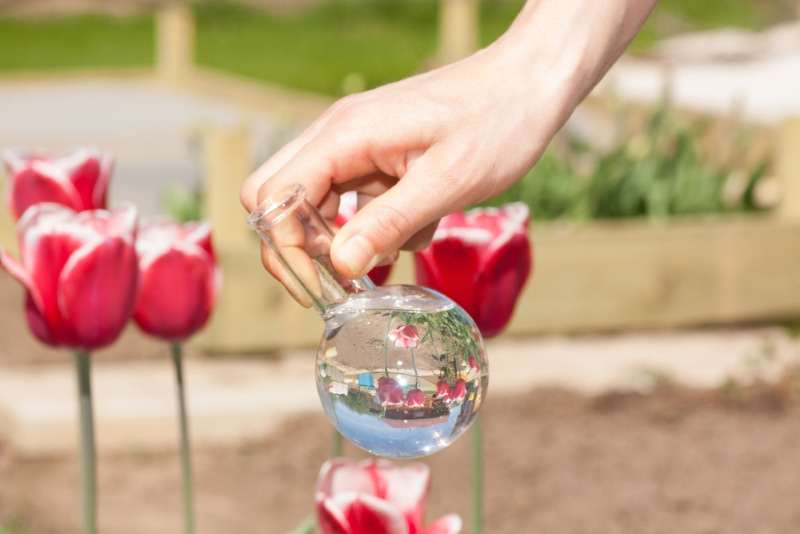
In hydroponic systems, plants receive their nutrients directly through a nutrient-rich solution, allowing them to absorb nutrients more efficiently than in soil. Some studies indicate that nutrient absorption in hydroponics is higher with the range for nitrogen, phosphorus, potassium, calcium, and magnesium absorption between 2.2% and 0.3% better than in soil.
As a result, plants grown hydroponically tend to experience faster growth compared to those grown in soil. Additionally, with proper nutrient dosing, you can easily tailor the nutrient solution to the specific needs of your plants.
Nutrients in Soil
For soil-grown plants, nutrients are absorbed through their roots as they grow in the soil. While the natural soil may contain some level of nutrients, you often need to add additional fertilizers and nutrients specific to your plants’ needs.
However, it may be more difficult for plants to access and absorb these nutrients, as they are subject to factors such as soil quality, nutrient availability, and pH levels that can’t be directly controlled. This often results in slower growth compared to hydroponics, as soil-grown plants spend more energy searching for nutrients within the soil.
Ultimately, the choice between hydroponics and soil for nutrient delivery comes down to your personal preference, growing environment, and desired crop outcomes. Both methods have their respective advantages and challenges when it comes to nutrients, so consider your individual needs and goals when deciding which system is best for you.
Pros and Cons of Hydroponics and Soil
Advantages of Hydroponics
Hydroponics offers several advantages that can help improve your gardening experience. One of the main benefits is water conservation. Since hydroponic systems use a closed-loop system, they consume up to 90% less water compared to traditional soil-based gardens.
Another advantage is the ability to grow plants indoors, which allows you to maintain consistent environmental conditions year-round. This can lead to faster growth rates and higher yields compared to soil gardening.
Related: Are hydroponic gardens worth it? Find out from our detailed guide: Is Hydroponics Worth It? A Quick Guide to Cost and Benefits
Disadvantages of Hydroponics
Despite its benefits, hydroponics is not without drawbacks. One of the main challenges is the initial investment in setting up the system, which can be more expensive than traditional soil-based gardening. Additionally, hydroponics requires more maintenance and close monitoring of factors such as nutrient levels and pH balance.
Furthermore, mistakes in hydroponics can have immediate effects on your plants, and any issues like power outages or equipment malfunctions can damage your crops. Also, some may argue that plants grown in hydroponics can lack the same natural flavor as those grown in soil.
Advantages of Soil Gardening
Soil gardening has its own unique benefits. One of the major advantages is that soil provides a natural environment for your plants, enabling them to absorb nutrients like nitrogen, potassium, and phosphorus directly from the earth. The availability of natural sunlight is another factor and contributes to the lower running costs that you have to take into account while thinking about the profitability of growing crops.
Soil gardening also tends to be more forgiving, as minor imbalances or deficiencies can be easier to correct in soil compared to hydroponic systems. Plus, many growers believe that plants grown in soil have a better flavor profile than hydroponically grown plants.
Related: Can you move hydroponic plants to soil if you need to for any reason? Yes, you can and we can guide you through the process!
Disadvantages of Soil Gardening
Despite its advantages, soil gardening has some drawbacks as well. One potential downside is the increased space required for soil gardens, as well as the dependence on suitable outdoor climate conditions. This is also a challenge with an outdoor hydroponic growing system, but it’s easier to control with fans, heaters, etc. Soil gardening can also suffer from pests, which may require additional treatments or interventions to prevent damage to your plants.
Additionally, soil gardening can be more labor-intensive and require greater physical effort, as you may need to engage in activities like tilling, weeding, and managing watering schedules. Finally, soil gardening typically results in a longer, slower growing cycle compared to hydroponics.
Space And Location Considerations
When choosing between hydroponic and soil gardening, you’ll want to consider the space requirements and the location where you plan to set up your garden. Both methods have different needs, so let’s explore them further.
Hydroponics Space Requirements
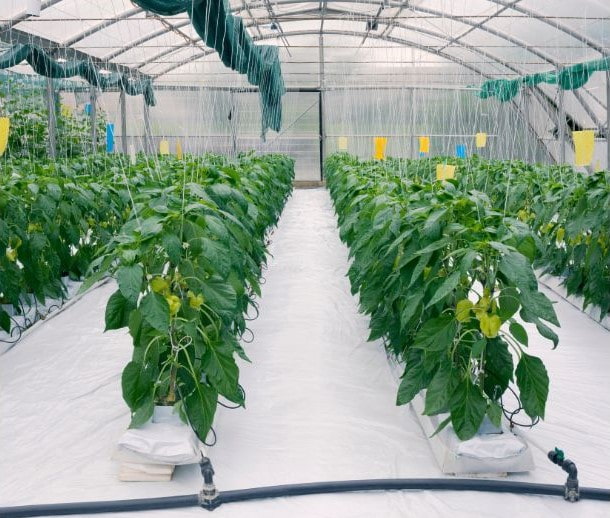
One of the advantages of hydroponics is that it can be easily set up indoors or in small spaces like an apartment or a corner within your home. As you don’t need soil, you can grow plants in vertical systems, allowing you to make better use of the available space. This makes hydroponics a great choice for those with limited outdoor space or those who wish to grow plants year-round within the controlled environment of their home.
However, keep in mind that hydroponic systems require specific equipment, such as nutrient reservoirs, pipes, and pumps, which can take up some space. So, it’s essential to plan according to your available area and consider the size of the equipment needed to support your hydroponic setup successfully.
Soil Gardening Space Requirements
Soil gardening typically requires more space as the plants are grown in traditional outdoor gardens, raised beds, or pots. If you have a backyard, a home garden can easily be set up, and you can make optimal use of your outdoor area. Additionally, soil gardening can provide a natural and more familiar gardening experience, allowing you to enjoy spending time outdoors.
However, if you’re in an apartment or have limited outdoor space, traditional soil gardening may be less feasible. In such cases, you may still be able to grow plants in smaller containers or pots on a balcony or window sill, but your garden’s size and the variety of plants you can grow will be limited compared to what you could achieve with a hydroponic system.
Ultimately, your choice between hydroponic and soil gardening will depend on your available space, the location where you plan to set up your garden, and your personal preferences.
Crops And Yield Differences
When comparing hydroponics and soil gardening, it’s essential to consider the differences in crop yields and growth rates. In this section, you’ll learn about the yields of both gardening methods for various vegetables such as lettuce, tomatoes, leafy greens, strawberries, cucumbers, and spinach.
Hydroponic Crop Yields
Hydroponic systems have several advantages when it comes to crop yields. Do plants grow faster hydroponically or in soil? In general, plants grown hydroponically grow up to 30% faster and can produce more fruit compared to soil-based plants. As an example, hydroponic lettuce typically experiences rapid growth and produces high yields because it can directly access the nutrients it needs.
Other vegetables such as tomatoes, leafy greens, strawberries, cucumbers, and spinach also benefit from hydroponic systems, often resulting in higher yields. This is due to the controlled environment, efficient nutrient delivery, and lower risks of pests and diseases.
Soil Garden Crop Yields

Soil gardening also has its advantages, but generally yields lower than hydroponics. However, some claim that soil-grown vegetables have a better flavor, which may make up for the lower yields. Soil gardening allows you to grow a wider range of plants, as it offers a more diverse and natural environment.
When growing vegetables like lettuce, tomatoes, leafy greens, strawberries, cucumbers, and spinach in soil, you might experience slower growth and smaller yields compared to hydroponic systems. This is primarily because the nutrients in the soil are not as easily accessible, and the plants are more exposed to pests and diseases. However, a well-maintained soil garden can still produce healthy and delicious vegetables for you to enjoy.
Pest and Weed Management
Managing pests and weeds is a critical aspect of gardening, regardless of whether you’re using hydroponics or soil as your growing medium. In this section, we’ll discuss pest control in hydroponics and soil gardening.
Pest Control in Hydroponics
In hydroponic systems, your plants grow without soil, often leading to fewer problems with pests and weeds. Since many common pests and weeds thrive in soil, removing soil from the equation can dramatically reduce their presence in your garden.
However, hydroponic systems are not completely immune to pests. Some pests, such as fungus gnats, can still find their way into your system. To prevent and manage pests in hydroponics, regularly check your system for any signs of infestation. You can also use physical barriers like insect screens or sticky traps to catch and prevent pests from entering your growing space.
If you do encounter pests, you may need to use natural or chemical pesticides. If you’re in organic hydroponics, you’ll have to use organic pesticides. It’s crucial to carefully research the specific pesticide you’re considering and ensure it’s compatible with hydroponic systems, as not all pesticides or herbicides may be suitable for use in hydroponics.
Pest Control in Soil Gardening
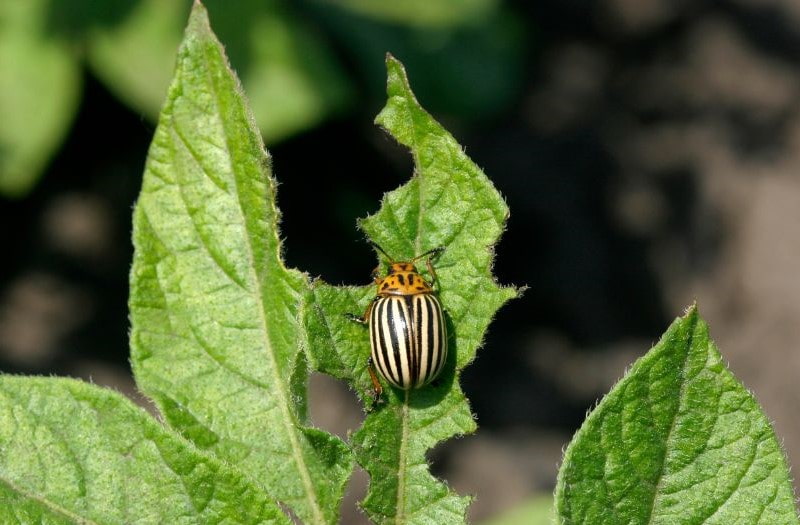
Soil gardening naturally comes with a greater risk of pests and weeds than hydroponic gardening, as soil provides a more conducive environment for pests to thrive.
To control pests in soil gardening, you can employ various strategies. Regularly inspect your plants for signs of infestation and remove any visible pests by hand or using a spray of water. Make it a habit to remove any weeds to keep them from competing with your plants for nutrients, water, and sunlight.
When using pesticides or herbicides, make sure to use them judiciously to minimize the risk of harming beneficial insects and pollinators. Opt for natural or organic options whenever possible, and always read and follow the label instructions regarding application rates and timing for targeted pest control.
Remember that a well-rounded pest and weed management plan is essential for both hydroponic and soil gardening. By regularly monitoring your garden and employing appropriate control measures, you can enjoy a healthier and more productive garden regardless of your chosen growing medium.
Cost And Maintenance Factors
Hydroponic Setup And Maintenance Costs
In hydroponics, your initial setup cost may be higher compared to soil gardening. You will have to invest in equipment like grow lights, nutrient solutions, pumps, and a suitable growing medium. Additionally, you’ll need an adequate area for your garden where climate and temperature can be controlled.
Maintenance costs also play a role in hydroponics. Although hydroponic gardens can be automated, periodic system checkups, nutrient solution adjustments, and replacing equipment when necessary are essential tasks. While these tasks take time and effort, they are important for keeping your garden in optimal condition.
Soil Gardening Setup And Maintenance Costs

Soil gardening usually has a lower initial cost, as the basic equipment required includes tools, soil, and seeds or seedlings. However, there are ongoing maintenance tasks to consider, such as watering, fertilizing, and weeding during the growing season, which require time and labor.
Pest control is another potential expense in soil gardening. Organic pesticides or chemical options may be needed to keep pests at bay. Besides, the outdoor climate may require special equipment or structures, such as greenhouses or shade cloths, to protect plants during extreme weather conditions.
Taste and Flavor Comparison
When deciding between hydroponic and soil-grown produce, the taste and flavor play an important role. In this section, we will compare the taste of produce grown in hydroponics versus soil.
Flavor of Hydroponically Grown Produce
Hydroponically grown fruits and vegetables can have a different taste compared to their soil-grown counterparts. The primary factors impacting their flavor are sun exposure, water quality, and nutrient type. Since hydroponic plants grow in nutrient-rich water without soil, their roots may absorb more nutrients than they would in soil, sometimes leading to more robust growth and higher amounts of amino acids. However, they might contain less of the natural flavors that contribute to a more complex taste.
Flavor of Soil-Grown Produce
Soil-grown produce is often considered to have a richer and more natural flavor, likely due to the presence of organic matter and microbes in the soil. These factors can affect the availability of nutrients and lead to a more diverse range of taste compounds such as sugars, sesquiterpenes, and organic acids. The taste of soil-grown plants may also be influenced by the mineral content in the soil, which can result in subtle differences in flavor, depending on the growing location.
In summary, both hydroponic and soil-grown produce have their own unique taste and flavor characteristics. The choice between the two may come down to individual preference and the specific crops being grown.
Growth Cycle And Environment Control
When it comes to choosing between hydroponics and soil gardening, it is essential to understand how the growth cycle and environment control differ in both methods. This will help you make an informed decision based on your specific needs and gardening goals.
Growth Cycle In Hydroponics
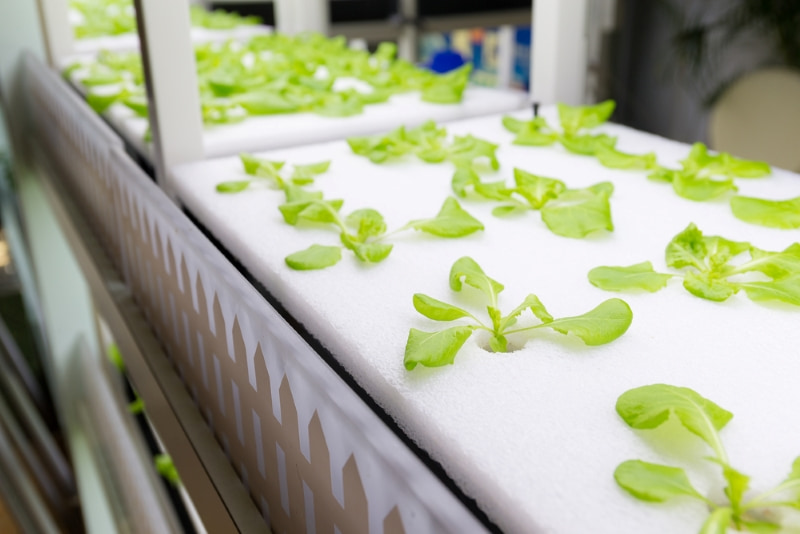
Hydroponic systems allow you to have more control over the growing environment. With hydroponics, plants receive the exact amount of nutrients they need, allowing for faster growth rates and potentially higher yields. By not relying on soil, you can easily monitor and adjust the pH levels, oxygen, and nutrient concentrations in the water solution, leading to a more efficient and productive system.
Additionally, hydroponic farming has some benefits to the environment. Since it is usually done in a closed or semi-closed system, it consumes less water than traditional soil-based methods. Furthermore, hydroponic systems can be easily set up in urban spaces, minimizing the need for large agricultural land and reducing transportation distances for fresh produce.
Growth Cycle In Soil Gardening
Soil gardening, on the other hand, offers a more natural approach to plant growth. The soil acts as a buffer and self-regulates certain aspects of the environment, making it more forgiving for busy growers. However, this can also lead to a longer and slower growing cycle than in hydroponics. You need to monitor the plants closely for pests and diseases, which can be more prevalent in soil-based systems.
One advantage of using soil as a growing medium is that it provides some nutrients, such as nitrogen, potassium, and phosphorus, naturally. This means that you might not need to invest in as many fertilizers or supplements for your plants. But it is still essential to keep a close eye on the pH levels and nutrient availability to ensure robust and healthy plant growth.
Alternative Growing Mediums
When it comes to gardening, you have several options for choosing the right growing medium that caters to your specific needs. In this section, we will explore some alternative growing mediums, whether you’re using hydroponics or soil-based methods.
Hydroponic Growth Media
Hydroponic systems do not rely on soil; instead, plants are supported by an inert growth medium that allows for proper nutrient and moisture absorption. Some common hydroponic growth media options you can consider include:
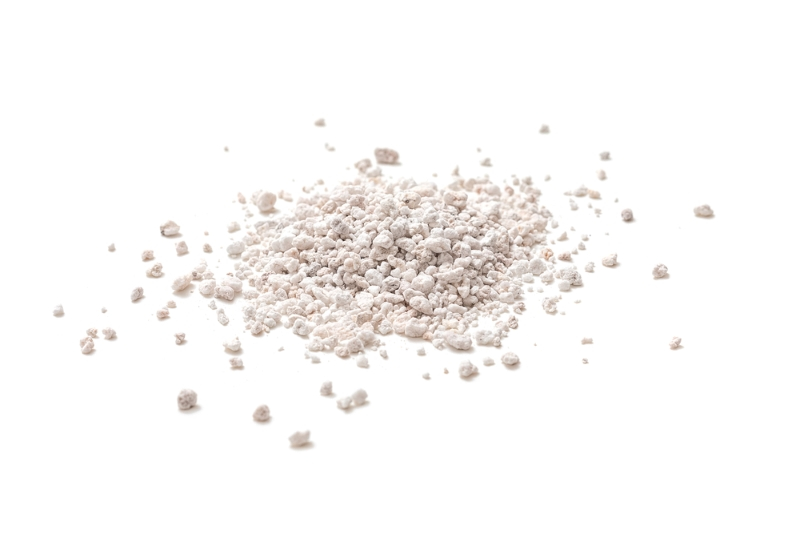
- Pebbles – Lightweight, reusable, and providing excellent drainage, pebbles can be an effective choice for hydroponic systems. However, they may not retain moisture as well as other options.
- Clay – Expanded clay pellets or LECA (Light Expanded Clay Aggregate) are another popular choice; they are lightweight, porous, and provide a stable structure for root growth. Additionally, they have excellent water and nutrient retention capabilities.
- Coconut coir – Made from ground up coconut husks, this organic medium is hormone-rich and fungus-free. It retains moisture well and is a good option for environmentally conscious growers.
Soil-Based Alternatives
If you prefer the more traditional route of gardening in soil but are looking for alternatives to standard potting soil, consider these options:
- Sand – Sand can be mixed with garden soil to improve drainage and aeration. Be cautious when using sand, as it can also cause the soil to become too compacted, making it difficult for roots to penetrate.
- Potting soil mix – High-quality potting soil mixes contain a blend of ingredients such as peat moss, perlite, and vermiculite; these materials help improve drainage and aeration while providing essential nutrients for plant growth.
- Compost – Incorporating compost into your soil not only provides plants with a rich source of nutrients, but also helps improve soil structure, water retention, and overall soil health.
As you can see, there are several alternative growing mediums available to you, whether you’re using hydroponics, soil-based gardening, or a combination of both. Experiment with different media to find the one that works best for your growing environment.
Conservation And Waste
In your gardening journey, it’s important to consider the impact on the environment, especially when it comes to water use and waste management. Below, we’ll discuss the water conservation aspects of hydroponics and waste management in soil gardening.
Water Conservation In Hydroponics
One significant advantage of hydroponics is its efficient use of water. In a hydroponic system, plants are grown in a nutrient-rich solution, which allows for better absorption of water and nutrients compared to traditional soil gardening. This means that your plants will require less water – up to 70% less – to achieve optimal growth.
Since hydroponic systems continuously recycle water, any unused water and nutrients can be returned to your reservoir for use in future feeding cycles, further reducing waste. By using less water and minimizing waste, you are now needing up to 90% less water and not only helping the environment but also saving on your water bill.
Waste Management In Soil Gardening
Soil gardening, on the other hand, tends to generate more waste in terms of water and nutrients. As plants are unable to absorb everything in the soil, a significant portion of these resources is often wasted. However, there are ways to address this issue and make your soil garden more eco-friendly.
One such method involves incorporating microorganisms into your soil. These beneficial microorganisms can help break down organic matter and convert it into nutrients that your plants can absorb more easily. They also improve the soil structure, which allows for better water retention and overall plant health.
By implementing water-saving techniques, such as drip irrigation and mulching, you can further reduce water waste in your soil garden. These methods promote efficient water use by slowly delivering water to your plants’ roots, preventing runoff and evaporation losses.
Indoor Hydroponic Systems
Indoor hydroponic systems offer a unique way to grow plants without soil. By using nutrient-rich water solutions and tailored indoor environments, hydroponics can produce high-quality and efficient yields. Let’s explore home hydroponic setups and commercial indoor farming in more detail.
Home Hydroponic Setups
Home hydroponic systems provide you the opportunity to grow your favorite hydroponics plants in a controlled environment. With grow lights and the right hydroponic grow box, you can have a thriving indoor garden that needs no soil.
For beginner hydroponic gardening, there are several types of home hydroponic systems to choose from, such as a Deep Water Culture system and Nutrient Film Technique (NFT). An Aeroponics system, Drip system, and Wick system can also be considered.
As you gain experience, you can customize your setup to maximize plant health, growth, and yield. This may include adjusting lighting schedules, nutrient concentrations, and the type of growing medium used.
Commercial Indoor Farming
Commercial indoor farming with hydroponics can help solve challenges related to limited land availability, water scarcity, and food security. By growing plants in a controlled environment, farmers can optimize resources and reduce waste, while ensuring optimal plant growth.
Some key benefits of commercial hydroponic systems include:
- Efficient water use
- Higher crop yields
- Reduced pesticide use
- Consistent product quality
- Expanded growing seasons
With advancements in technology, commercial hydroponic farming continues to become more accessible and efficient. The future of agriculture may heavily rely on hydroponics as a sustainable method for producing high-quality crops while minimizing the impact on natural resources.


